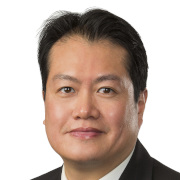Starting with the right foundation
Deciding on the right business structure is critical when embarking on a property development through an SMSF as different structures come with different compliance requirements.
When deciding to undertake property development within an SMSF, trustees must carefully select the right business structure to use for their fund to help avoid potential breaches of the relevant rules and regulations.
These can include the Superannuation Industry (Supervision) Act 1993 and the Superannuation Industry (Supervision) Regulations 1994, as well as the non-arm’s length income provisions of the Income Tax Assessment Act 1997 (Tax Act) and Part IVA of the Tax Act 1936.
Generally speaking, an SMSF can undertake a property development on its own, via a joint venture with related or unrelated parties or by investing in an entity which then carries out the property development.
Within these general categories, there are a range of options available to SMSFs. Some are more easily suited to the compliance requirements for SMSFs than others, but all require careful consideration.
Naturally, the more entities involved with the SMSF, the more compliance risk is involved.
On its own
The most basic approach is for the SMSF to invest directly in property development, assuming the fund complies with the SIS Act. The benefits of this method include:
- No need for other entities, so there are less costs and administration.
- The SMSF’s cash can be used for development.
- Existing SMSF assets can be developed.
- Income and capital are taxed at concessional rates.
However, the drawbacks of this method include:
- SIS Act/SIS Regulations can make development difficult.
- There is no asset protection.
- SMSFs cannot borrow to improve existing assets.
- Complications exist when using related-party builders/developers.
Joint venture
Although it can be complicated, it is possible for SMSFs to enter an agreement with another party to participate in a property development as partners, through a joint venture (JV). For instance, the SMSF may contribute the land to the JV, or it may provide cash to the JV for the development.
Under the partnership, the fund is entitled to receive payment depending upon the contract agreed to by both parties. The SMSF will generally receive a payment that is calculated as a portion of the proceeds from the sale of the asset.
However, there are significant compliance considerations. For example, if the SMSF provides the cash, then the sole purpose test needs to be carefully checked regarding the SMSF acquisition of an asset from a related party. Alternatively, the SMSF’s contribution could be seen as a loan or an investment in a related party, thereby a possible breach of the SIS in house asset rules.
Pre-1999 unit trust
If an SMSF acquired units in a unit trust prior to 11 August 1999, or under the transitional period operating till 30 June 2009, the units cannot be considered as in-house assets.
These pre-1999 trusts are very valuable to SMSFs when it comes to property development, as the trust can undertake activities that SMSFs cannot undertake themselves without breaching the in-house assets rules. However, while these units are not considered in-house assets, it is important to recognise and appreciate that the sole purpose test and non-arm’s length income rules still apply.
Non-geared companies and trusts
An SMSF can invest in a unit trust or a company that must satisfy the requirements of certain SIS Regulations. These requirements include that the unit trust:
- Not have any borrowings
- Not lease any property to a related party except for business real property
- Cannot invest in another entity (e.g. not have shares in a company)
- Cannot have a charge over assets
- Cannot acquire an asset from a related party except for business real property
- Cannot conduct a business or carry trading stock
Given that a property development could be viewed as a business activity, a non-geared trust or company is unlikely to be a suitable vehicle for a property development.
Unrelated trust
An unrelated trust, however, may be a good option for property development by an SMSF.
A unit trust would be considered unrelated if the SMSF and its entities hold less than 50 per cent of the shares, do not control the decisions of the trust and do not have the power to change the trustee.
This strategy is particularly beneficial as trusts are not restricted by the same regulations that SMSFs are, including:
- It can borrow.
- It can acquire multiple assets.
- It can carry out the development and improve or change the nature of any asset without restriction.
- The assets can be used as security for borrowing.
- After development, the assets can be held long-term or sold.
- Units will not be considered in-house assets.
In conclusion, the popularity of real property as an investment asset class in Australia will ensure that property remains strong as an SMSF investment option. However, property requires greater compliance oversight and can become a compliance minefield when there is a property development involved. As such, trustees need to be across all the regulatory issues, preferably before the ATO comes knocking on their door.
Andrew Yee, director, superannuation, HLB Mann Judd Sydney








